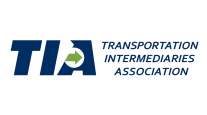Staff Reporter
Trucking Growth Expected to Be Strong Amid Recovery, Expert Says

[Ensure you have all the info you need in these unprecedented times. Subscribe now.]
Economic recovery in the wake of the COVID-19 pandemic is putting pressure on the freight-hauling sector, and an industry expert said changes brought on by virus-related cutbacks are contributing to a tightening market that could rival earlier periods of growth.
“The strength of the COVID post-shutdown economic recovery has been pretty remarkable to be sure,” said John Woodcock, director of market development at railcar pooling specialist TTX Company, during the Intermodal Association of North America’s 2021 Virtual Intermodal Operations, Safety & Maintenance Business Meeting. “But actual freight demand has been distorted in some respects by changes in employment and productivity slowdowns across the manufacturing sector and throughout the supply chain.” The event took place May 4-5.

Woodcock during his May 4 presentation pointed specifically to the dry van sector, and how current capacity rivals the shortages seen when the freight market soared in 2018.
“The data is indicating that current conditions are tighter than in 2018,” Woodcock said. “But you’ve got to put this into perspective. These are year-over-year comparisons and post-2020 —at least this time last year — it really provides extremely easy comparisons.”
Pointing to data from industry tracking firm FTR, Woodcock noted that dry van volume is currently running about 2% above the 2018 average, with continued strengthening expected this year. He said FTR is forecasting dry van volume for 2021 will exceed 2020 by about 10.2% and 2018 by 4.2%.
“Pretty respectable growth,” Woodcock said. “That’s dry van on the whole.”
He also pointed to an FTR forecast for demand by distance — specifically, loadings in excess of 150 miles that he called a “sweet spot” for intermodal.
“They’re expecting those loads to be up about 9.5% this year versus last, and about 5.5% [above] 2018.” Woodcock noted. “Trailer volume is really bursting at the seams right now. Up 20% versus 2020, but in comparison to 2018, trailer volume is actually down 13%.”
He noted that while intermodal lost some share to trucking in 2019 and 2020 as competitive rates and low fuel prices lifted trucking, intermodal began rebounding during the fourth quarter of 2020. “April’s performance will be telling so we’re looking forward to seeing those numbers,” Woodcock said. “The first-quarter numbers are a little opaque given the disruptive weather patterns that certainly affected rail service throughout the Southwest.”
He also suggested that rising demand for freight-hauling service may lure drivers back to trucking. “When freight grows the supply tightens [and] drivers come back into the market because the work becomes more steady — rates and wages go up — and that in itself attracts even more drivers to the pool,” Woodcock said. “There’s a lot of churn in the trucking labor market, so the industry always needs more new drivers coming in.” He also noted that the pandemic disrupted the flow of new drivers entering the industry.
Motor carriers, meanwhile, are more apt to invest in new equipment when business trends are strong, Woodcock noted. And those new trucks, he said, can be a selling point for fleets trying to attract new drivers
“Tight supply always increases rates and, therefore, profits,” he said. “When there are profits to be had, truckers will go out and find new equipment.
Want more news? Listen to today's daily briefing below or go here for more info:




